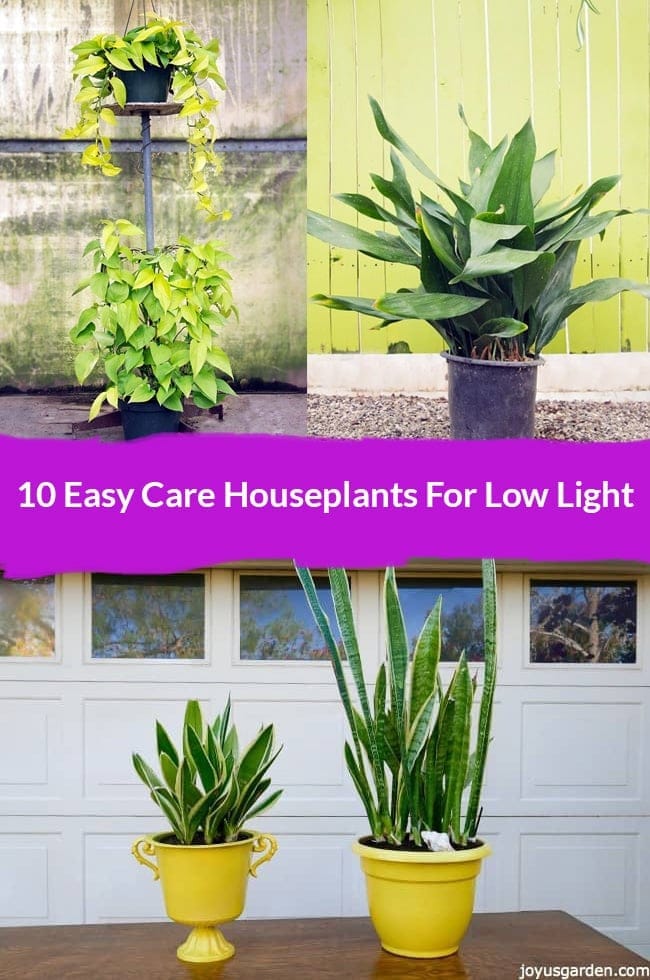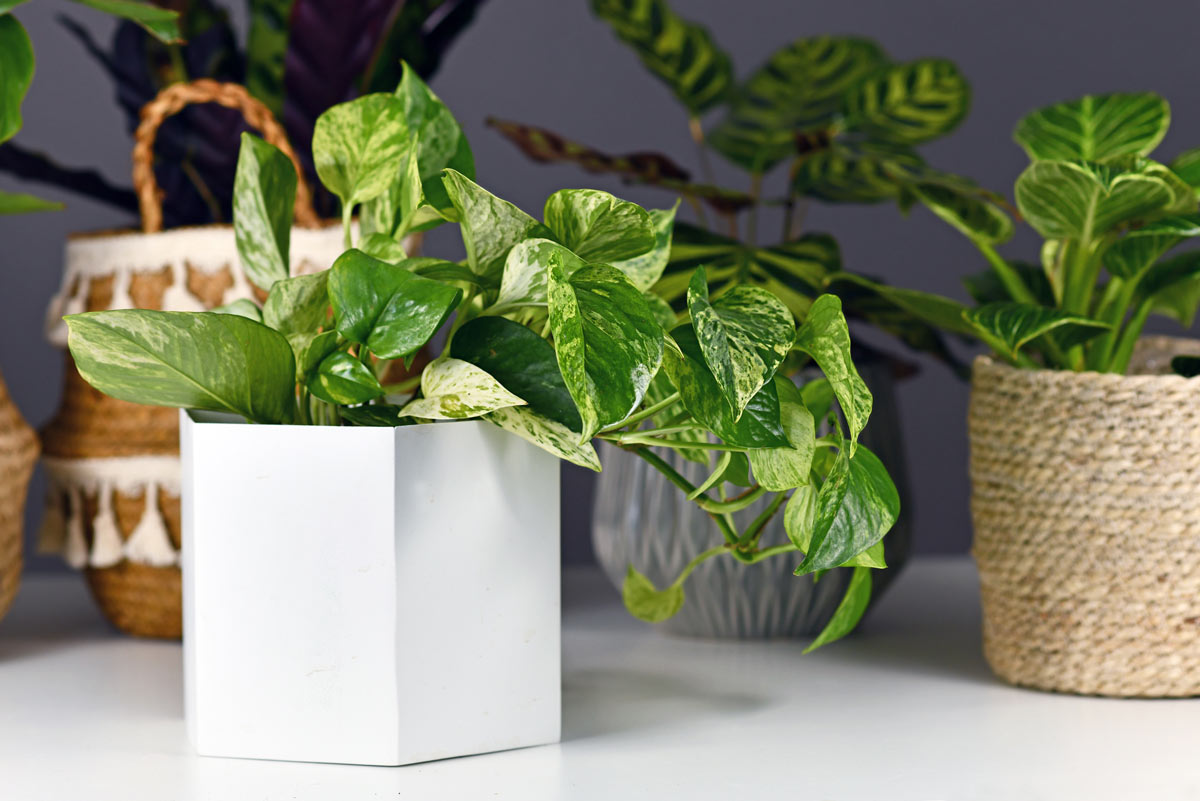Uncover the Secrets of Low-Light Indoor Plants and Exactly How They Enhance Your Environment
Low-light indoor plants have actually amassed raising attention for their one-of-a-kind capacity to boost both visual charm and environmental top quality within homes and offices. These resistant types, including the Serpent Plant and Tranquility Lily, not just prosper in tough illumination conditions but additionally play a pivotal role in air purification and psychological well-being. Understanding the particular advantages and treatment demands of these plants can dramatically impact your living space. As we explore the details of their advantages, you may uncover insights that can transform your environments in unexpected means.
Advantages of Low-Light Indoor Plants
Although several people assume that indoor plants need bountiful sunlight to flourish, low-light indoor plants supply a wide variety of advantages that make them suitable for numerous environments. One of the main benefits is their flexibility; they can flourish precede with minimal all-natural light, such as offices, basements, or spaces with little home windows. This feature permits individuals to improve their surroundings with plant, contributing to enhanced visual appeals without the demand for comprehensive illumination adjustments.
In addition, low-light indoor plants can substantially boost interior air high quality by launching and filtering damaging toxic substances oxygen, making living areas healthier. Research has revealed that specific ranges can take in contaminants, thus advertising a cleaner ambience. Furthermore, they can enhance mental health by decreasing tension and enhancing productivity. The existence of plants has been connected to better feelings of tranquility and emphasis.
Furthermore, low-light plants usually need much less maintenance than their sun-loving equivalents, making them ideal for busy people or those new to horticulture. Their strength permits them to love marginal intervention, thus supplying a gratifying experience for plant enthusiasts and novices alike. In recap, low-light interior plants serve both aesthetic and practical objectives, making them important enhancements to any area.
Leading Low-Light Plant Selections
Low-light indoor plants can be found in a variety of types, each offering unique features and benefits fit for dark atmospheres. Amongst one of the most preferred varieties is the Snake Plant (Sansevieria), understood for its building fallen leaves and air-purifying capacities. This resistant plant flourishes on forget and can tolerate a variety of light conditions.
Another outstanding option is the ZZ Plant (Zamioculcas zamiifolia), which includes shiny, dark environment-friendly fallen leaves and is highly drought-tolerant. Its adaptability makes it a preferred for offices and homes with minimal sunshine.
The Pothos (Epipremnum aureum) is also a top competitor, with its trailing vines and heart-shaped leaves - Best low-light indoor plants. This functional plant can be trained to climb up or cascade, including aesthetic passion to any kind of area
:max_bytes(150000):strip_icc()/low-light-plants-GettyImages-1360510675-50ad3d1ad95942ecaed5e4cee84f7572.jpg)
Treatment Tips for Low-Light Plants
Caring for low-light indoor plants needs a nuanced understanding of their certain requirements to guarantee ideal growth and vigor. It is vital to select the appropriate potting mix, as a well-draining soil is critical to protect against root rot. A mix created for houseplants, typically containing peat moss and perlite, functions well for most low-light ranges.
Watering is another crucial aspect of treatment. Low-light plants generally need much less frequent watering compared to their sun-loving equivalents. It is advisable to examine the top inch of dirt; if it really feels dry, it's time to water. Overwatering can cause complications such as mold and mildew and origin decay.
Fertilization should be come close to with care. During the expanding period, a diluted liquid plant food can be applied monthly, however in winter season, lots of low-light plants enter dormancy and need little to no fertilizing.
Last but not least, it is very important to regularly cleanse the fallen leaves to remove dirt, permitting much better light absorption. By sticking to these care ideas, you can grow a thriving atmosphere for your low-light interior plants, boosting both their appearance and long life.
Enhancing Air Quality With Plants
Interior plants play a significant function in boosting air top quality within homes and workplace. Through the procedure of photosynthesis, these plants take in carbon dioxide and launch oxygen, adding to a healthier ambience. Furthermore, certain low-light interior plants possess the capacity to filter damaging contaminants, such as trichloroethylene, benzene, and formaldehyde, which are commonly located in view website interior atmospheres.

Furthermore, the visibility of indoor plants can increase moisture levels, which aids ease dry skin and respiratory system problems, further boosting overall health. This ability to boost air quality not just promotes physical wellness however additionally supports psychological wellness.
Including low-light interior plants right into your living and working spaces can bring about a more dynamic and stimulating atmosphere (Best low-light indoor plants). Purchasing these natural air cleansers is a simple yet effective method for boosting indoor air quality and promoting a much healthier way of living
Developing a Serene Indoor Space
The combination of plants right into living areas not just boosts air high quality yet additionally adds to a peaceful environment. Low-light interior plants, such as serpent plants and pothos, are specifically effective in creating a serene atmosphere, as they prosper in problems that may otherwise be unwelcoming for various other plant. Their lush foliage offers a calming aesthetic, minimizing tension and promoting relaxation.
Integrating these plants right into your home or workplace can evoke a sense of tranquility and health. Strategically placing them in locations where you invest significant time, such as living offices or areas, enables an immersive experience with nature, which has actually been shown to enhance state of mind and cognitive feature.
Moreover, the gentle movement of leaves in action to airflow can develop a vibrant aesthetic component that improves the overall ambiance. Think about using a range of plant heights and structures to add deepness and rate of interest to your space. With thoughtful positioning and treatment, low-light indoor plants can change any type of area right into a tranquil sanctuary, cultivating not only aesthetic complete satisfaction but additionally psychological and mental health.

Conclusion
Integrating low-light interior plants right into numerous settings returns substantial advantages, consisting of boosted air quality and enhanced aesthetic charm. The transformative power of low-light plants emphasizes their value in enhancing both work and residential setups.
Although lots of people think that indoor plants require bountiful sunlight to prosper, low-light indoor plants supply a wide variety of benefits that make them ideal for numerous environments.Moreover, low-light interior plants can considerably improve interior air quality by filtering unsafe contaminants and releasing oxygen, making living rooms healthier. Additionally, specific low-light interior plants possess the capacity to filter hazardous toxins, such as trichloroethylene, benzene, and formaldehyde, which are frequently found in interior settings.
Low-light indoor plants, have a peek at these guys such as serpent plants and pothos, are particularly reliable in developing a serene environment, as they prosper in problems that might otherwise be inhospitable for other go to these guys greenery.Integrating low-light interior plants right into numerous environments yields considerable advantages, consisting of boosted air quality and improved visual charm.